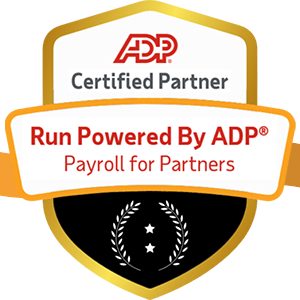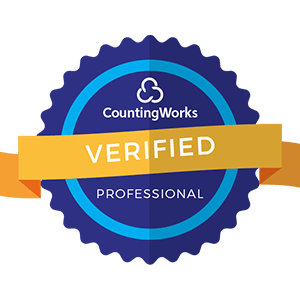As your business expands, so do your payroll responsibilities. But don't let the complexities of paying your growing workforce overwhelm you. We've got the insider scoop on how to transform your payroll from a headache-inducing chore into a well-oiled machine. Ready to revolutionize your approach? Let's dive in!
The Payroll Paradigm Shift: Why It Matters

Before we jump into the nitty-gritty, let's talk about why streamlining your payroll process is a total game-changer for your growing business:
- Time is money: A streamlined payroll process frees up precious hours you can reinvest in growing your business.
- Happy employees = Productive employees: Consistent, accurate paychecks lead to satisfied team members.
- Compliance is key: Stay on the right side of labor laws and tax regulations (because nobody wants surprise audits, right?).
- Scalability for the win: A solid payroll foundation supports your business as it grows from startup to industry leader.
Now that we're all on the same page about the why, let's explore the how.
Step 1: Assess Your Current Payroll Situation
Before you can improve, you need to know where you stand. It's time for a payroll self-reflection session!
Ask yourself these thought-provoking questions:
- How much time does your current payroll process consume each pay period?
- What are the most frustrating aspects of your current system?
- How many errors or discrepancies do you typically encounter?
- Are your employees satisfied with the current payroll process?
- How well does your current system handle tax calculations and reporting?
Pro tip: Create a payroll process map to visualize your current workflow. This bird's-eye view can help identify bottlenecks and inefficiencies.
Step 2: Embrace the Power of Payroll Software
If you're still relying on spreadsheets or (gasp!) paper-based systems, it's time for an upgrade. Modern payroll software is a game-changer for growing businesses.
Key features to look for in payroll software:
- Automated calculations: Say goodbye to manual number-crunching and hello to accuracy.
- Tax compliance: Built-in tax tables and automatic updates keep you in line with ever-changing regulations.
- Employee self-service: Empower your team to access pay stubs, update personal info, and more.
- Integration capabilities: Look for software that plays well with your existing HR and accounting systems.
- Scalability: Choose a solution that can grow with your business.
Popular payroll software options to consider:
- Gusto
- ADP Run
- QuickBooks Payroll
- Paychex Flex
- Rippling
Remember, the best software for your business depends on your specific needs and budget. Do your homework and take advantage of free trials before committing.
Step 3: Standardize Your Payroll Policies and Procedures
Clear, consistent policies are the backbone of a streamlined payroll process. It's time to get those guidelines in writing!
Essential policies to document:
- Pay periods and payday schedules
- Time tracking procedures
- Overtime rules
- Paid time off accrual and usage
- Payroll deductions
- Pay adjustments and corrections
The policy creation process:
- Research: Ensure your policies comply with federal, state, and local regulations.
- Draft: Write clear, concise policies using plain language.
- Review: Have your legal team or an HR consultant review the policies.
- Communicate: Share the policies with your employees and provide training as needed.
- Update: Regularly review and revise your policies to keep them current.
Mental model alert: Think of your payroll policies as a roadmap. They guide your team through the payroll landscape, ensuring everyone arrives at the same destination (accurate paychecks) without getting lost along the way.
Step 4: Streamline Your Time Tracking
Accurate time tracking is the foundation of a smooth payroll process. Let's make it as effortless as possible!
Time tracking best practices:
- Go digital: Implement an electronic time tracking system to eliminate paper timesheets.
- Mobile access: Choose a system that allows employees to clock in/out from their smartphones.
- Integrate with payroll: Look for time tracking solutions that seamlessly connect with your payroll software.
- Set clear expectations: Establish guidelines for when and how employees should track their time.
- Regular audits: Periodically review time records to ensure accuracy and compliance.
Thought-provoking statement: "Time is the most valuable currency in business. Track it wisely, and your payroll will thank you."
Step 5: Automate, Automate, Automate

Automation is your secret weapon in the quest for payroll efficiency. Let's explore some key areas where automation can work its magic:
- Payroll calculations: Let software handle the math, from gross pay to tax withholdings.
- Direct deposit: Say goodbye to paper checks and hello to automatic electronic payments.
- Tax filings: Automate the generation and submission of payroll tax forms.
- Reporting: Set up automatic generation of key payroll reports.
- Benefits administration: Integrate benefits management with your payroll system for seamless deductions.
The automation mindset: Think of automation as your tireless payroll assistant, working 24/7 to ensure accuracy and efficiency. By automating routine tasks, you free up mental bandwidth for strategic thinking and problem-solving.
Step 6: Cultivate a Culture of Payroll Accuracy
Accuracy isn't just about having the right systems in place—it's a mindset that should permeate your entire organization.
Tips for fostering a culture of payroll accuracy:
- Training: Provide comprehensive payroll training for HR staff and managers.
- Communication: Encourage open dialogue about payroll issues and questions.
- Accountability: Establish clear roles and responsibilities for payroll tasks.
- Continuous improvement: Regularly solicit feedback on the payroll process and act on suggestions.
- Celebrate successes: Recognize team members who contribute to payroll accuracy and efficiency.
Mental model: The Payroll Accuracy Pyramid
Imagine a pyramid with these levels, from bottom to top:
- Foundation: Clear policies and procedures
- Structure: Reliable systems and software
- Support: Well-trained staff and managers
- Refinement: Regular audits and improvements
- Peak: A culture of accuracy and excellence
By building each level of the pyramid, you create a strong, stable payroll process that can withstand the pressures of a growing business.
Step 7: Master the Art of Payroll Reconciliation
Regular reconciliation is key to catching and correcting errors before they snowball into major issues.
The payroll reconciliation process:
- Compare: Match payroll reports with other financial records (e.g., bank statements, general ledger).
- Investigate: Look into any discrepancies or unusual patterns.
- Correct: Make necessary adjustments to resolve errors.
- Document: Keep detailed records of the reconciliation process and any changes made.
- Learn: Use insights from reconciliation to improve your payroll process.
Pro tip: Set a regular schedule for payroll reconciliation (e.g., monthly or quarterly) and stick to it religiously.
Step 8: Stay on Top of Compliance
Payroll compliance is a moving target, with regulations changing frequently. Here's how to stay ahead of the game:
- Subscribe to updates: Sign up for newsletters from relevant government agencies (IRS, DOL, state agencies).
- Join professional organizations: Connect with other payroll professionals to share knowledge and best practices.
- Conduct regular audits: Periodically review your payroll process for compliance gaps.
- Invest in training: Keep your payroll team up-to-date with ongoing education and certification programs.
- Consider outsourcing: For complex compliance issues, partnering with a payroll service provider can provide peace of mind.
Thought-provoking statement: "Compliance isn't just about avoiding penalties—it's about building trust with your employees and establishing your business as a responsible employer."
Step 9: Leverage Data for Payroll Insights
Your payroll data is a goldmine of insights waiting to be discovered. Here's how to tap into that wealth of information:
Key payroll metrics to track:
- Labor costs as a percentage of revenue
- Overtime trends
- Turnover rates
- Benefits enrollment and costs
- Tax liability patterns
Turning data into action:
- Visualize: Use dashboards and charts to make payroll data easy to understand at a glance.
- Analyze: Look for patterns and trends in your payroll data over time.
- Benchmark: Compare your metrics against industry standards to identify areas for improvement.
- Forecast: Use historical payroll data to project future labor costs and budget accordingly.
- Share: Provide relevant payroll insights to department managers to inform their decision-making.
Mental model: The Payroll Data Feedback Loop
Think of your payroll data as part of a continuous feedback loop:
- Collect data
- Analyze and gain insights
- Make informed decisions
- Implement changes
- Measure results
- Repeat
By constantly cycling through this loop, you create a payroll process that's not just efficient, but also adaptive and intelligent.
Step 10: Plan for Scalability

As your business grows, your payroll needs will evolve. Set yourself up for success by planning for scalability from the start.
Scalability strategies:
- Choose flexible software: Opt for payroll solutions that can easily accommodate a growing workforce.
- Document everything: Create detailed process documentation to make onboarding new payroll staff easier.
- Build redundancy: Cross-train team members on payroll tasks to avoid single points of failure.
- Anticipate challenges: Regularly assess your payroll process to identify potential bottlenecks as you scale.
- Stay open to change: Be willing to reassess and revamp your payroll system as your business needs evolve.
Thought-provoking question: "If your business doubled in size overnight, could your current payroll process handle it? If not, what needs to change?"
The Payroll Transformation Toolkit: Your Recipe for Success
Congratulations! You've now got a comprehensive roadmap for streamlining your payroll process. But let's face it—change can be overwhelming. To help you put these ideas into action, here's your Payroll Transformation Toolkit:
- The 30-Day Payroll Challenge: Commit to implementing one improvement from this guide each day for the next month. Small, consistent changes add up to big results!
- The Payroll Process Scorecard: Create a simple scoring system to evaluate your payroll process regularly. Include categories like accuracy, timeliness, employee satisfaction, and compliance. Use this scorecard to track your progress and identify areas for improvement.
- The Payroll Efficiency Formula:
Payroll Efficiency = (Number of Employees Paid Accurately and On Time) / (Total Hours Spent on Payroll Process)
- Calculate this metric regularly and work on increasing the numerator while decreasing the denominator.
- The Payroll Improvement Kanban Board: Set up a visual board (physical or digital) with columns for "To Do," "In Progress," and "Done." Use sticky notes or digital cards to track payroll improvement ideas and their implementation status.
- The Payroll Stakeholder Map: Create a diagram showing all the people and departments that interact with or are affected by your payroll process. Use this map to ensure you're considering all perspectives when making changes.
Remember, streamlining your payroll process is a journey, not a destination. Embrace the continuous improvement mindset, and you'll create a payroll system that not only meets the needs of your growing business but becomes a strategic asset in its own right.
Final thought: "A streamlined payroll process isn't just about paying people—it's about valuing your team's time, effort, and trust. When you get payroll right, you're sending a powerful message about your company's commitment to its most valuable asset: its people."
Now, armed with this guide and your newfound payroll wisdom, go forth and conquer those payroll challenges. Your growing business (and your sanity) will thank you!






